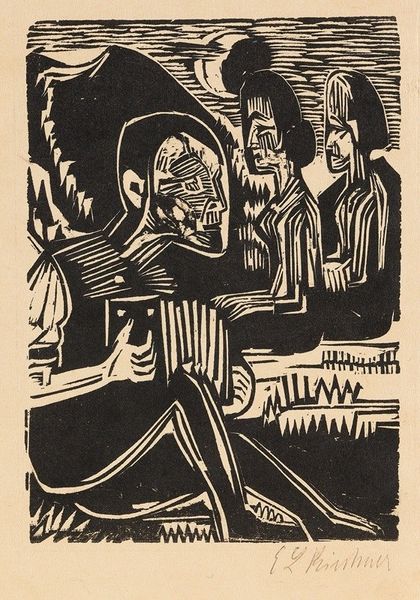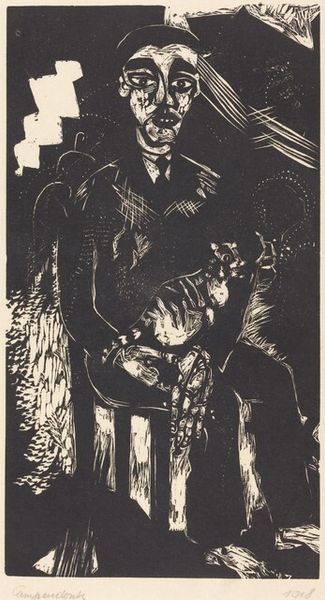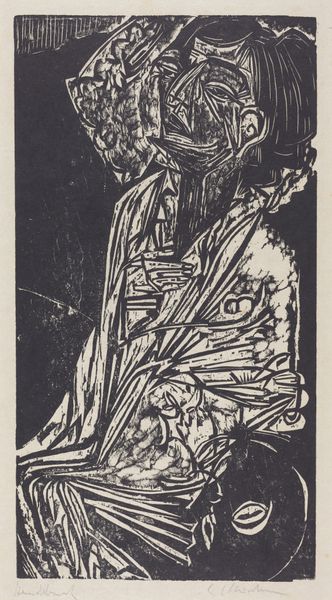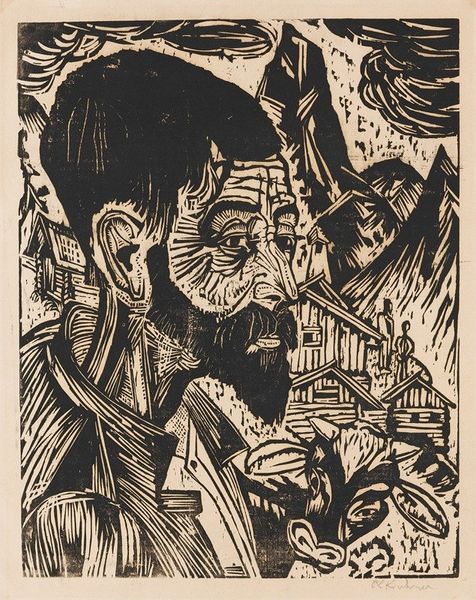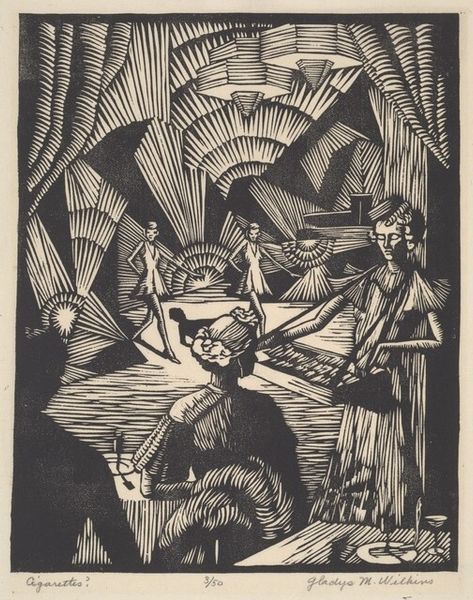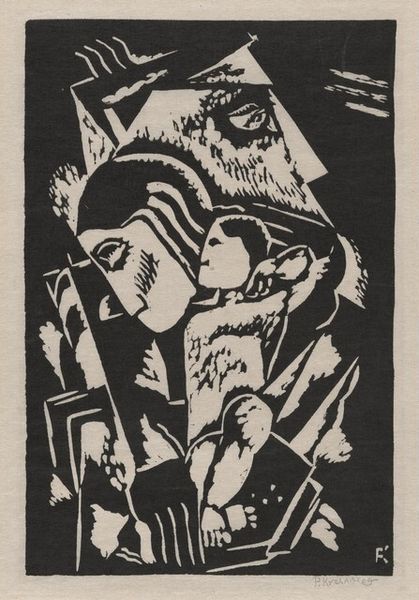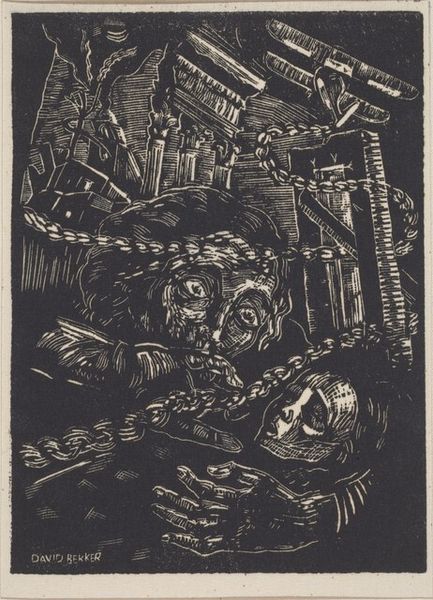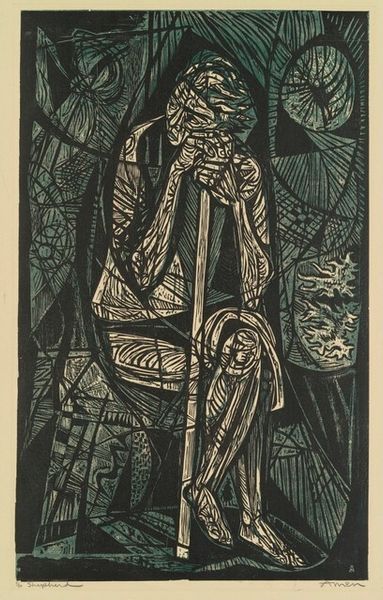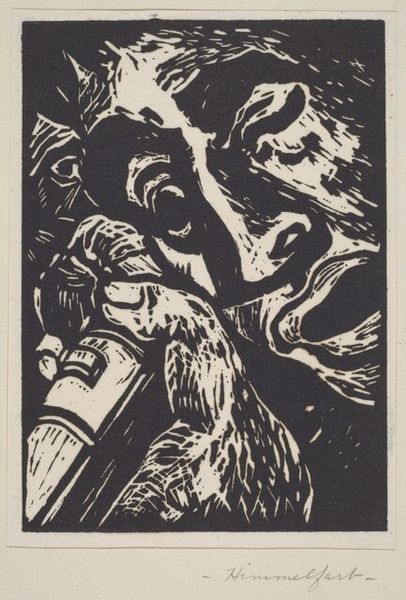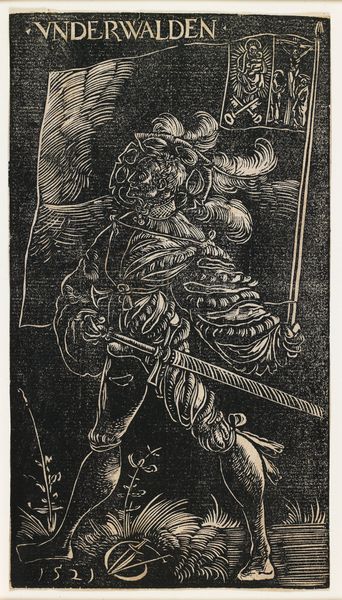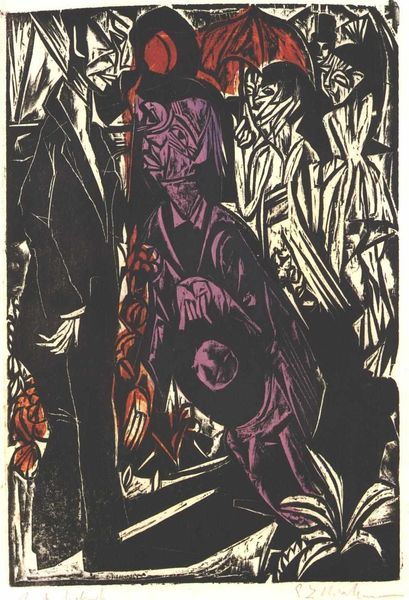
print, woodcut
#
portrait
# print
#
german-expressionism
#
figuration
#
expressionism
#
woodcut
Copyright: National Gallery of Art: CC0 1.0
Curator: Immediately, I feel this claustrophobia—this pressure from the inky black surrounding these figures. It’s like a psychological vise. What's your read? Editor: We're looking at Erich Heckel's "The Walk," created in 1919, a woodcut print that is very representative of the Expressionist movement. Consider the context: Germany grappling with the aftermath of WWI. What seems personal is, in reality, extremely political. Curator: Political… Yes, now that you say it, there’s definitely a simmering tension. That hand, accusatory, almost… well, aggressive. I keep circling back to that gesture. It commands your attention and feels as though pointing towards something that feels unsettling to see. Editor: Absolutely. The piece speaks to the societal fractures of the time and feels rife with disillusionment. Think about Expressionism—using distorted imagery to communicate raw emotions. The subjects embody a spiritual crisis. Curator: A crisis that is shown through form—I love the raw brutality of the carving! The lines almost slash at you, don’t they? Not a lot of woodcut manages to look so aggressive. Is there a suggestion that Expressionist artwork of this period could provide insights regarding class and wealth disparity? Editor: It's worth discussing the potential connections between Heckel's depiction and existing power structures during the Expressionist movement. There is much debate about what constitutes privilege. The war led to scarcity in resources for ordinary German families while others became enriched as a result of the economic consequences of the war. Curator: The composition throws you off, doesn't it? The face looms so large. Those eyes feel… judging. I think this work really encapsulates the way societies reflect the inner chaos experienced by groups, classes, families, or people as individuals. Editor: I see your point. There is the figure on the right with those spiky shapes all around its head. Its facial structure is almost skeletal—a visual declaration of physical and moral decline—Heckel communicates a lot of depth through the bare minimum use of white space! What an intense piece of art! Curator: This has made me think differently about the Expressionist movement. Thanks. Editor: Absolutely. I am keen to now focus on ways the style translates into the societal themes within the context of postwar Germany.
Comments
No comments
Be the first to comment and join the conversation on the ultimate creative platform.
